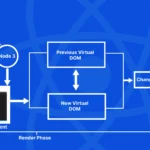Convesio Helps Users Auto-scale WordPress Websites to Enhance Success
Even with so many content management systems out there, WordPress continues to be the first choice for many bloggers and website owners. Nevertheless, if you are planning on building a new website, you need to weigh the pros and cons of using any blogging or content management system (CMS) platform available.
The combination of power and simplicity which WordPress offers has resulted in the platform becoming a favourite. In fact, over 74 million websites use WordPress to post new content every minute, which is powerful. A content management system (CMS) is designed to aid in the management of digital content. It can be used by multiple contributors (or entire teams) to generate, modify, organize, schedule, and publish web content.
In addition, it serves as a central collection of content and aids in workflow management. In this case, workflow management would provide different privileges and obligations to individuals based on their roles in the system. An author, for example, may be able to save and share their work, but an editor may revise and publish it. All of these tasks are possible for an administrator, but they can also assign permission to other people. Based on insights from the CMS industry, the CMS market is expected to grow to about $123.5 billion by 2026 due to a healthy growth rate stemming from the demand for digital marketing experiences, consumer demand for omnichannel solutions, and a growing market in the digital retail sector.
There are several reasons why companies and marketers should consider investing in a CMS. In fact, many people recognize the need for a content management system and understand how they can help publish and create content. Firstly, a CMS enables different content marketing team members to contribute to the material and assist in its publication. They can keep everything organized thanks to the system’s workflow management, content storage, and scheduling features. Since CMSs are browser-based, they can be accessed from anywhere, allowing collaborators from different regions to collaborate on content projects while using the same system.
Given that the content is stored in the exact location, various team members can access it without distributing multiple files to multiple individuals and having to keep track of everything. Furthermore, CMSs are often user-friendly after being set up and operating, allowing people without programming expertise to create content. It’s not necessary to learn HTML or CSS. This is because using the system, adding information to pages, and modifying it in a content editor is simple and intuitive.
CMSs also allow users to add SEO plugins and tools to improve their search ranking and website traffic. Options to add web page names, meta descriptions, and alt tags may be found within the interface itself. With all these features, content creators can focus more on the content itself with an easy-to-use system, improved organization, and SEO tools and plugins. They don’t have to worry about working with many files or coding, and they can quickly get another set of eyes to look over their work, even if they’re thousands of miles or continents apart. They can devote more time to fine-tuning the copy, adjusting the images, and creating more video content or A/B testing different subject lines, offers, CTAs, and formats.
There are many reasons why WordPress has become the go-to for companies of various sizes. First of all, it does not cost anything to use. Whether it’s a business website or a personal blog, the fact that WordPress is free to use is a big plus. They also don’t charge more if the site begins to receive more traffic than a user expected. WordPress is free, but it is also open-source, which means users can modify or update its source code to change the functionality or appearance of their website. Second, it still manages to rank at the top of the CMS market. In other words, WordPress outperforms the competition in functionality. Additionally, users can start using WordPress as soon as they install it. Other than the customization that users give with their theme and plugins that suit their interests and needs, there is no configuration required.
WordPress is also SEO-friendly. Popular search engines such as Google and Bing! Tend to rank websites that use WordPress higher than those that don’t, and WordPress SEO company can help you with this. Moreover, while WordPress started as an ideal platform for personal blogs, most people and businesses now use it for websites. Since the CMS features both post and page functions, users can now post regular blog articles without affecting their static pages. It is also great for users who want to change the look of their site whenever they want. With its free or premium themes, you can give your website a professional appearance and keep your company at the top of your customer’s minds. Finally, WordPress continues to improve over time thanks to its open-source coding and inventive developers. Whether it’s the WordPress team introducing new features, developers producing new plugins, or coders programming new functionality to customize a site, the CMS is constantly improving.
While WordPress is quite user-friendly, the process of making a successful website can be pretty time-consuming and confusing. In the hopes of making enterprise-level website hosting through WordPress available for everyone, Convesio has created a platform that represents a significant milestone from a functionality point of view. This is a first in the web hosting industry, as no other providers offer “Managed WordPress Scaling.” With Convesio’s Docker-based architecture and easy-to-use dashboard, customers can quickly set up a highly scalable WordPress website in minutes, unlike the typical timeframe of a complex VPS setup. Getting started is quite simple: customers can configure Auto Scaling by setting the minimum and the maximum number of Docker containers for their website to run on. Conversion will automatically deploy and remove additional containers depending on the required resources, with a load balancer sharing traffic evenly across each. Furthermore, more advanced users can set custom threshold values that trigger scaling events based on different combinations of CPU, Memory, and PHP Worker usage.
Initially launched in 2019, the third iteration of this platform introduces several other essential updates, including environment selection, database options, more granular performance metrics and logs via the dashboard, and performance improvements. Convesio uses Docker technology to package a highly performant WordPress stack that can be deployed in seconds the moment a customer clicks to create a new site—the auto-scaling functionality clones containers to match the number of instances required to handle the increase in load.
The platform was built to deliver a consistently fast experience of the load on the server. Conversion works particularly well for the following use cases: eCommerce, eLearning, online events, online publications, and agencies. Convesio has eliminated the need for complex and costly solutions by offering Enterprise-grade availability and scalability at the click of a button. Customers only pay for extra resources when they are needed, resulting in significant cost savings.

















